by Jen Dragon
The Venice Biennale inspires the entire city to host innumerable exhibitions and pop-up art shows from almost every nation in the world. Every street, calle and piazza hosts gallery exhibits of paintings, sculpture, drawing, prints, digital, film, as well as performance art, music and theater. Campo di San’Isepo, located in Castello near the Biennale Gardens, is no exception. Castello 925, with two locations on Fondamenta San Giuseppe, presents two American artists: a solo exhibition of paintings by Martin Weinstein at the 780 Fondamenta San Giuseppe annex gallery and artwork by Bobbie Moline-Kramer as part of a two person exhibit up the street at number 925.
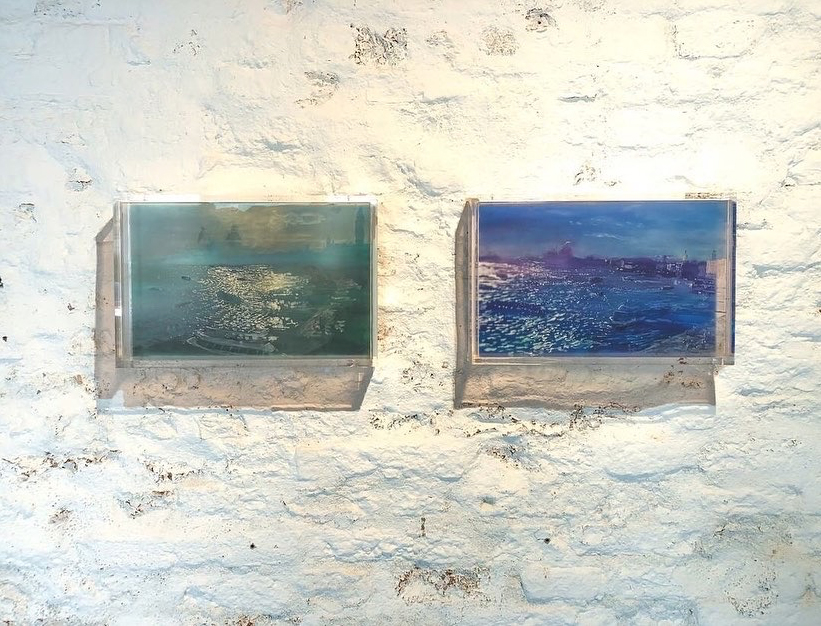
Martin Weinstein: Vedute Palinsesti
The title of Martin Weinstein’s exhibition, Vedute Palinsesti, refers to the remaining traces after earlier marks are effaced to make room for newer writing in medieval manuscripts. Like the concept of the palimpsest, (Palinsesto in Italian), Weinstein’s paintings are layers of different points in time, with memories of former experiences overlain by more recent visual experiences expressed by luminous, gestural and deft brushwork.
By painting on layers of translucent acrylic sheets and allowing these layers to re-combine and glow through one another, Martin Weinstein presents different stages of seeing. At first glance, these artworks seem rooted in the landscape tradition however the paintings present perceptions that together become an individual record of space and being. In Vedute Palinsesti, the combined images are painted in multiple sessions of direct observation from Weinstein’s rented studio in the Castello sector of Venice. Painted at different times, different days – and sometimes even years apart – the artworks are always from the same point of view. The final layer, placed in the furthest back, is an abstract panel that supports the realistic layers above signifying the ultimate unknowability of reality that underpins all perception. These multiple sheets of acrylic record a period of time, experience and memory and acknowledge that all these perceptions are illusory. Richard Vine observes about Weinstein’s unique painting style: “Although the results are deceptively traditional-looking landscapes, the process and the pictorial technique are quietly radical.”
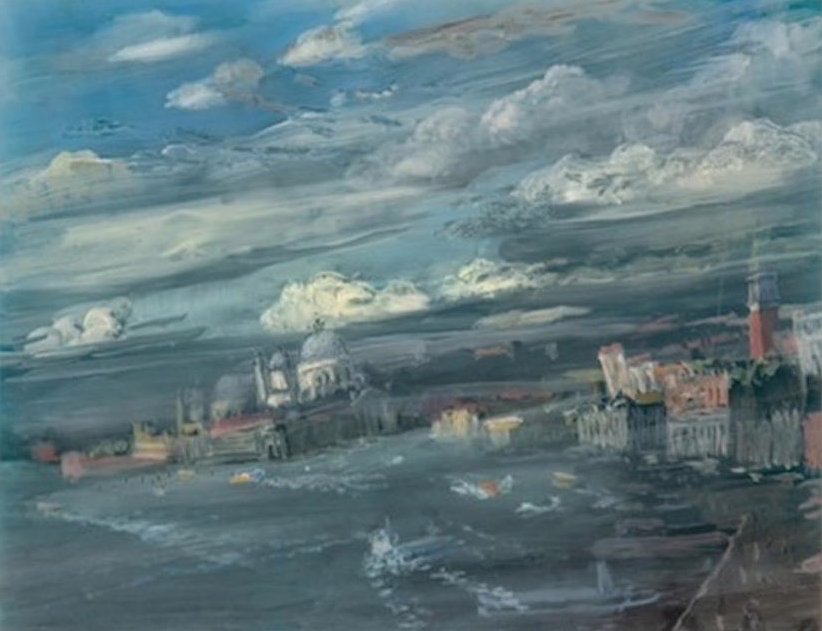
The 11 paintings in this installation follow the times of the day starting with the soft pink glow of morning light, traveling to the brilliant clarity of mid-day and slowly transforming to the dark shadows of evening punctuated by the sharp, staccato specks of reflected light. Because of the perennially shifting layers within each painting, the artworks belie their small scale, each one measuring not more than 11” x 16.5” x 2.5” and therefore appear much larger and nuanced. The visual cacophony of diverse watercrafts plying the mouth of the Grand Canal simmers down to a memory in the tiny dancing lights of the night views. No matter the time of day, the heavens never lose their drama as clouds roil across the landscape and absorb bristling towers as well as the soft, rounded domes of Venice. Sometimes, the painted waters part briefly to reveal a second church floating in their waves, other times, it is a tower valiantly pressing against the storm clouds that finds its echo in the depths of the evening sky.
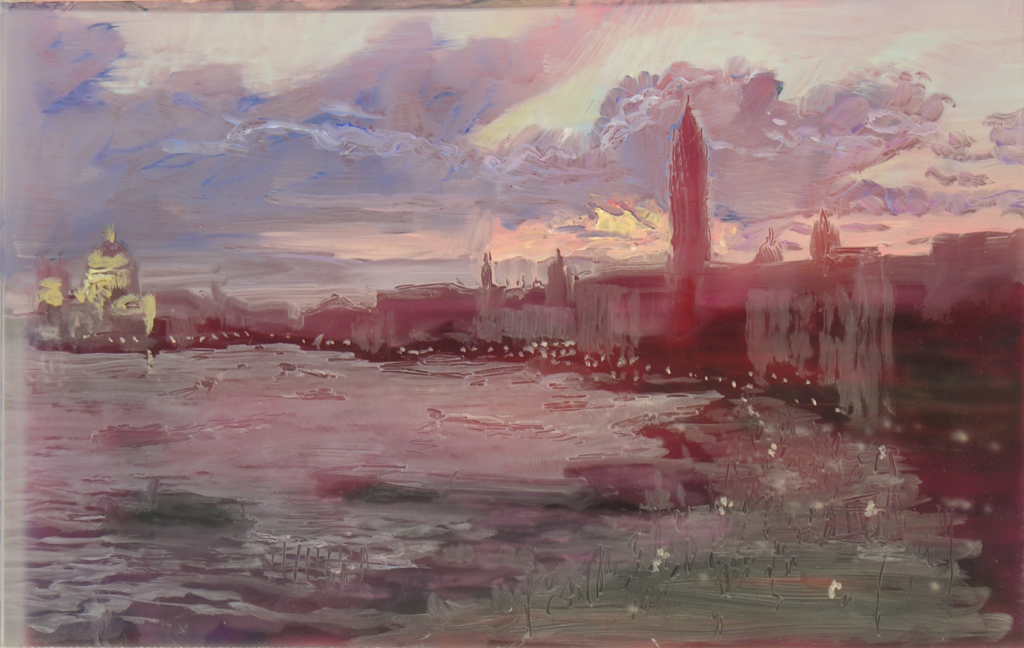
Although Martin Weinstein’s paintings are specific to Venice, the artist uses these historic and contemporary manifestations of this famous city as a catalyst for examining and isolating the layered process of painting. Rather than hide each painted level surface permanently below the previous layer, leaving the finished layer to sum up and seal the process, Martin Weinstein instead isolates each level of painting, allowing the viewers’ mind to recombine them and amplify the optical illusion of vision. It is through this spatial illusion that Weinstein reveals his true subject matter – not gorgeous architecture of a beloved city nor the small human activity that scurries about but the slowly enveloping experience of time.
Martin Weinstein’s virtual catalogue for Vedute Palinsesti can be viewed here.
Martin Weinstein Vedute Palinsesti is on view at Castello 925, Fondamenta San Giuseppe 780, Sestiere Castello, Venice Italy through July 10, 2022
Bobbie Moline-Kramer: Power of One
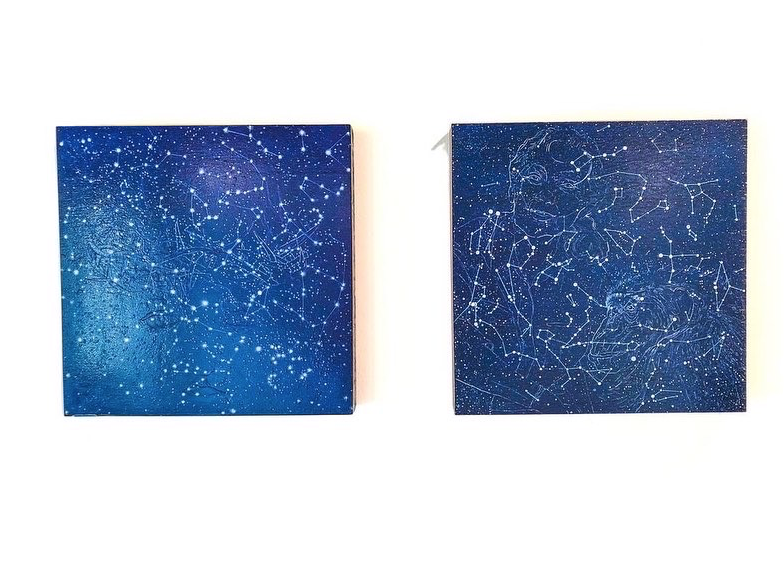
In the larger Castello 925 Gallery down the street, Bobbie Moline-Kramer exhibits together with painter Antonio Pauciulo. California-based artist Bobbie Moline-Kramer’s exhibition The Power of One is an installation that examines time, space and destiny using the study of constellations as a touchstone. Employing 16th-century glazing and gilding techniques, Moline-Kramer incises unique sky charts particular to each heroic figure with the same precision that antique celestial maps were prepared and painted by Italian and Dutch Renaissance masters. Each painting is a portrait of individuals selected by the artist for their courage to make a difference in the world. The astrological profiles of these various individuals are intertwined with the position of the stars at the time they were born or died (or in the case of a portrait of Italo Calvino, both birth and death are linked together. Another Moline-Kramer painting series depicts a family tree of birds representing the artist’s own ancestry and embedded history. However, Moline-Kramer does not just linger in the past but creates an adjacent installation that employs cutting edge technology to deconstruct her paintings into 3-D computer printed layers. Each layer of this installation is suspended from the ceiling and appears as ephemeral, variously hued flakes of sky floating down to earth. This paradoxical synergy combines facts with mysticism, mythology with mathematics, and traditional Renaissance technique with 21st century computer printing technology renders this exhibition not only about time and space but most importantly, about being. In the artist’s own words: “The concept of this body of work is twofold: the wonder of our world, and the power of one person to change that world”.
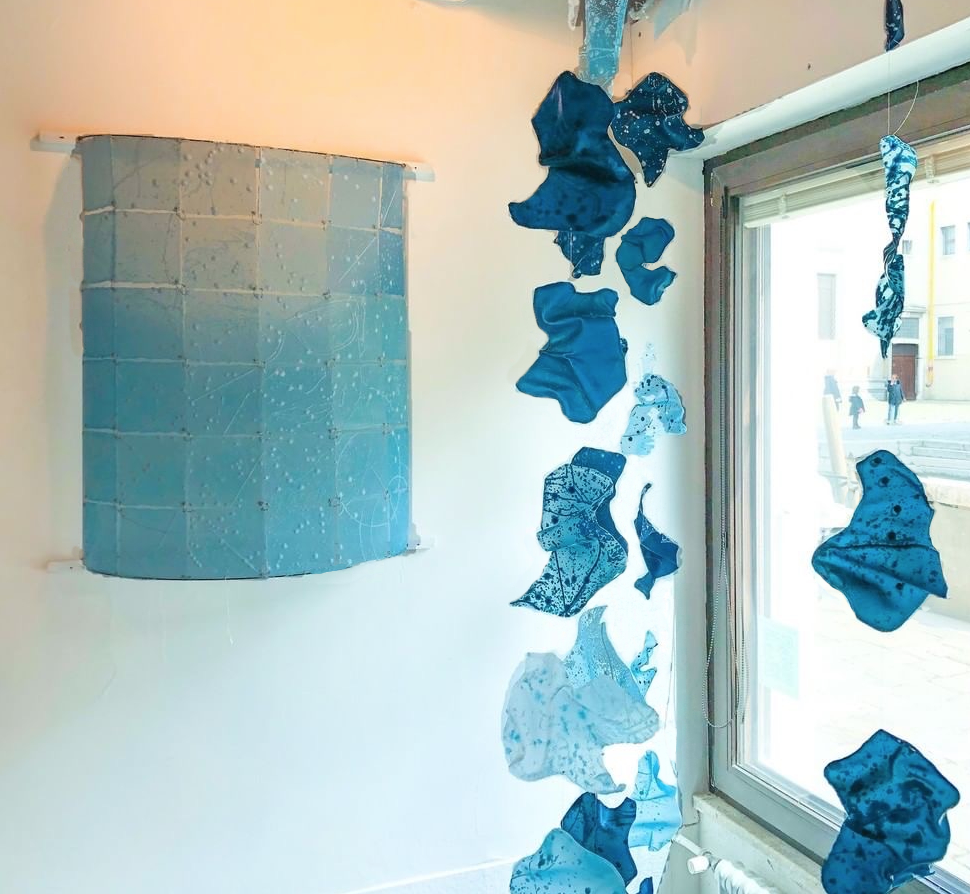
Moline-Kramer’s artwork is exhibited alongside the paintings of Antonio Pauciulo who places himself as a portraitist at the center of man’s questions about man. By setting himself the task to define himself through the mirror of the other, Pauciulo transposes this awareness of himself into the act of painting.
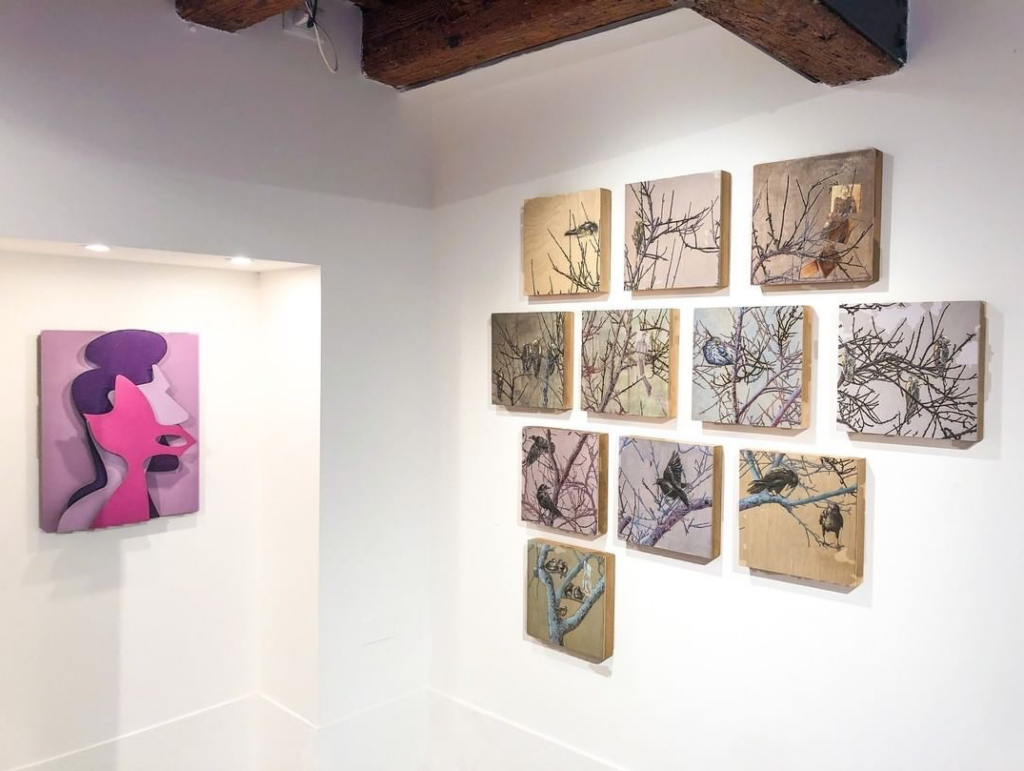
Castello 925 presents Bobbie Moline-Kramer The Power of One together with Antonio Pauciulo Artificial Creatures, in Castello 925, Fondamenta San Giuseppe through 10 July, 2022.
